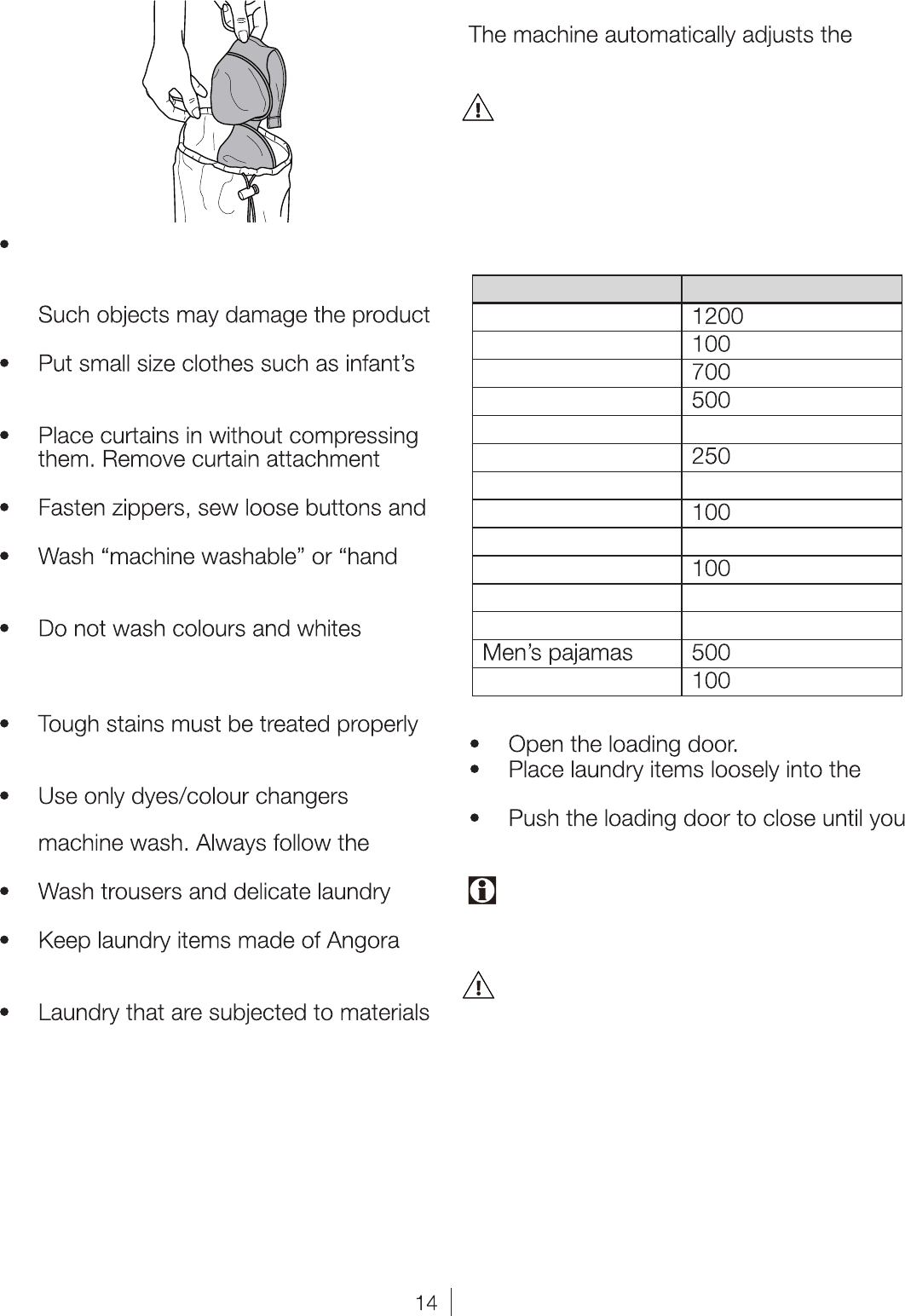
EN
such as coins, pens and paper clips,
Take out all items in the pockets
and turn pockets inside out and brush.
or cause noise problem.
socks and nylon stockings in a laundry
bag or pillow case.
items.
mend rips and tears.
washable” labelled products only with
an appropriate programme.
together. New, dark coloured cottons
release a lot of dye. Wash them
separately.
before washing. If unsure, check with a
dry cleaner.
and limescale removers suitable for
instructions on the package.
turned inside out.
wool in the freezer for a few hours
before washing. This will reduce pilling.
such as flour, lime dust, milk powder,
etc. intensely must be shaken off
before placing into the machine. Such
dusts and powders on the laundry
may build up on the inner parts of
the machine in time and can cause
damage.
Correct load capacity
The maximum load capacity depends on
the type of laundry, the degree of soiling
and the washing programme desired.
amount of water according to the weight of
the loaded laundry.
Follow the information in the
“Programme and consumption table”.
When overloaded, machine’s washing
performance will drop. Moreover, noise
and vibration problems may occur.
Laundry types and their average weights in
the following table are given as examples.
Laundry type Weight (g)
Bathrobe
Napkin
Duvet cover
Bed Sheet
Pillowcase 200
Tablecloth
Towel 200
Hand towel
Evening gown 200
Underclothing
Men’s overalls 600
Men’s shirt 200
Blouses
Loading the laundry
machine.
hear a locking sound. Ensure that no
items are caught in the door.
The loading door is locked while a
programme is running. The door
can only be opened a while after the
programme comes to an end.
In case of misplacing the laundry, noise
and vibration problems may occur in
the machine.


















